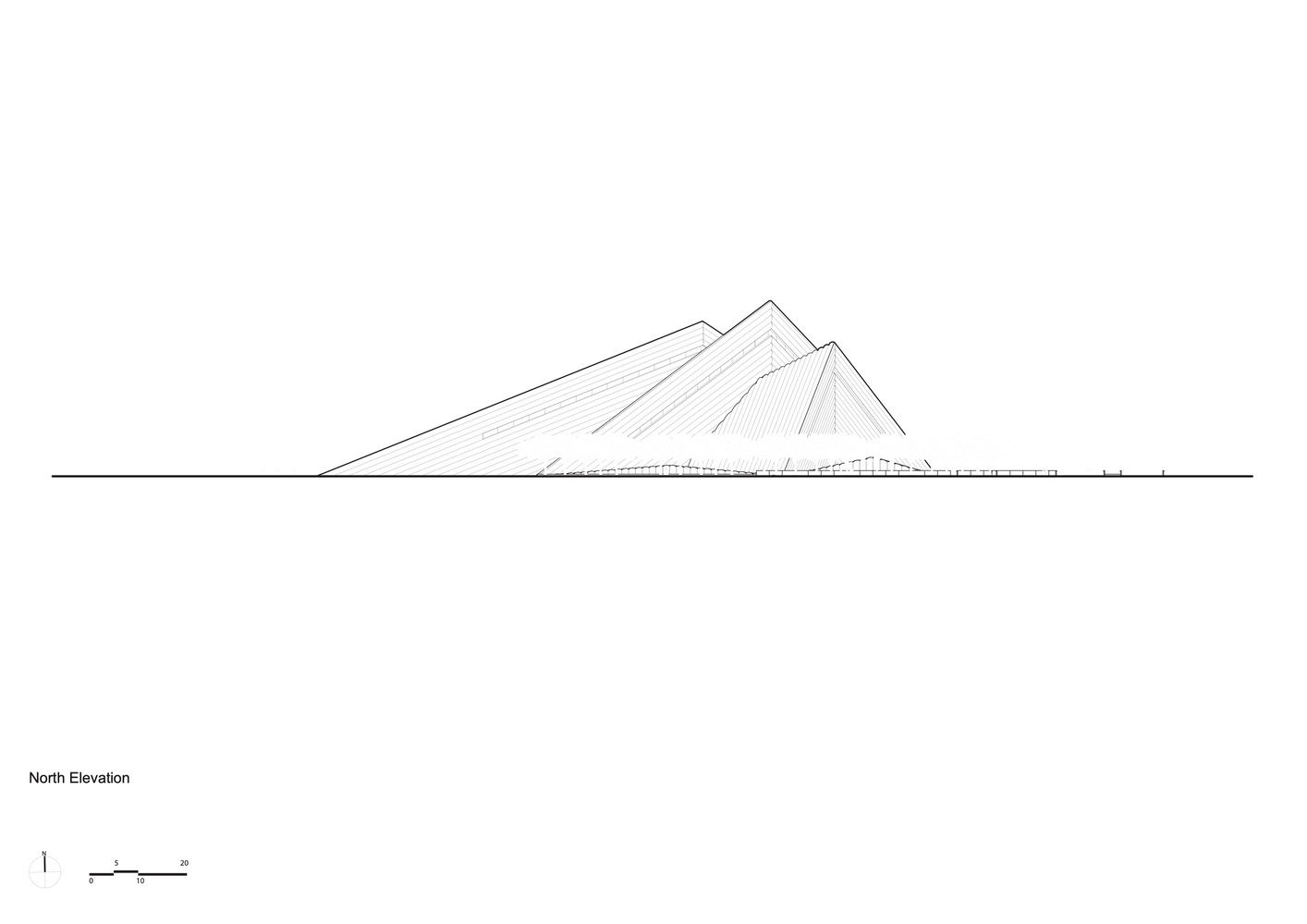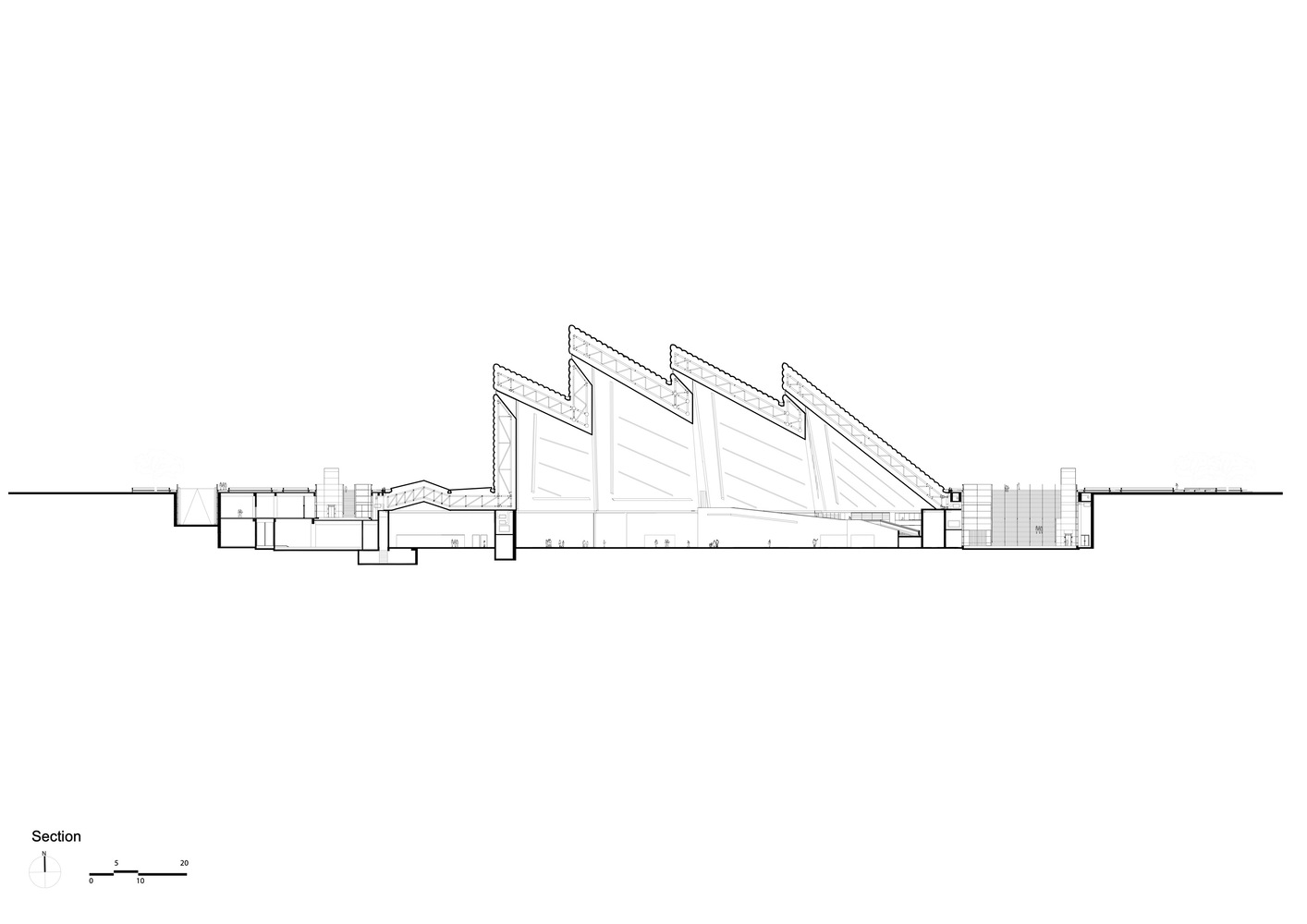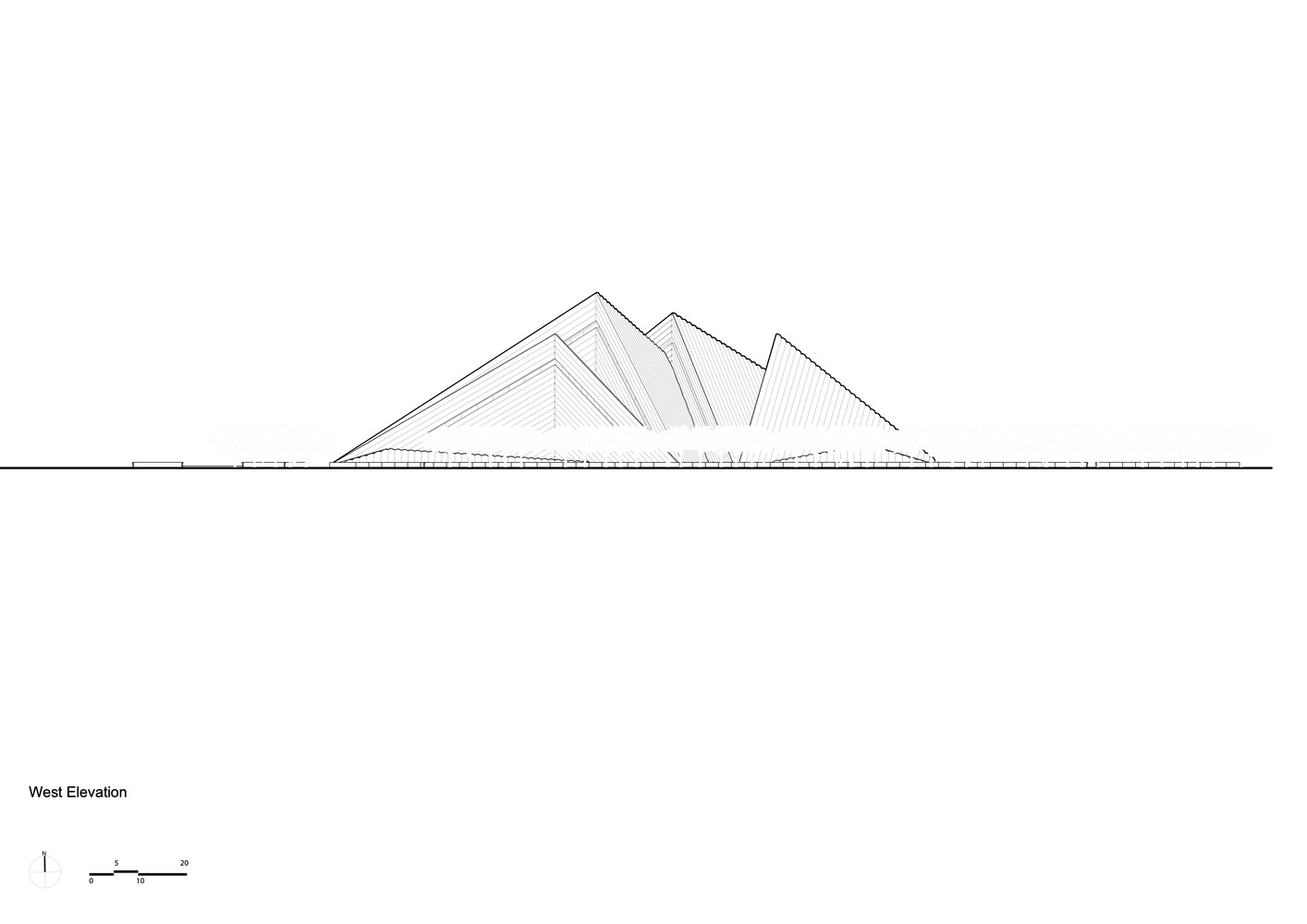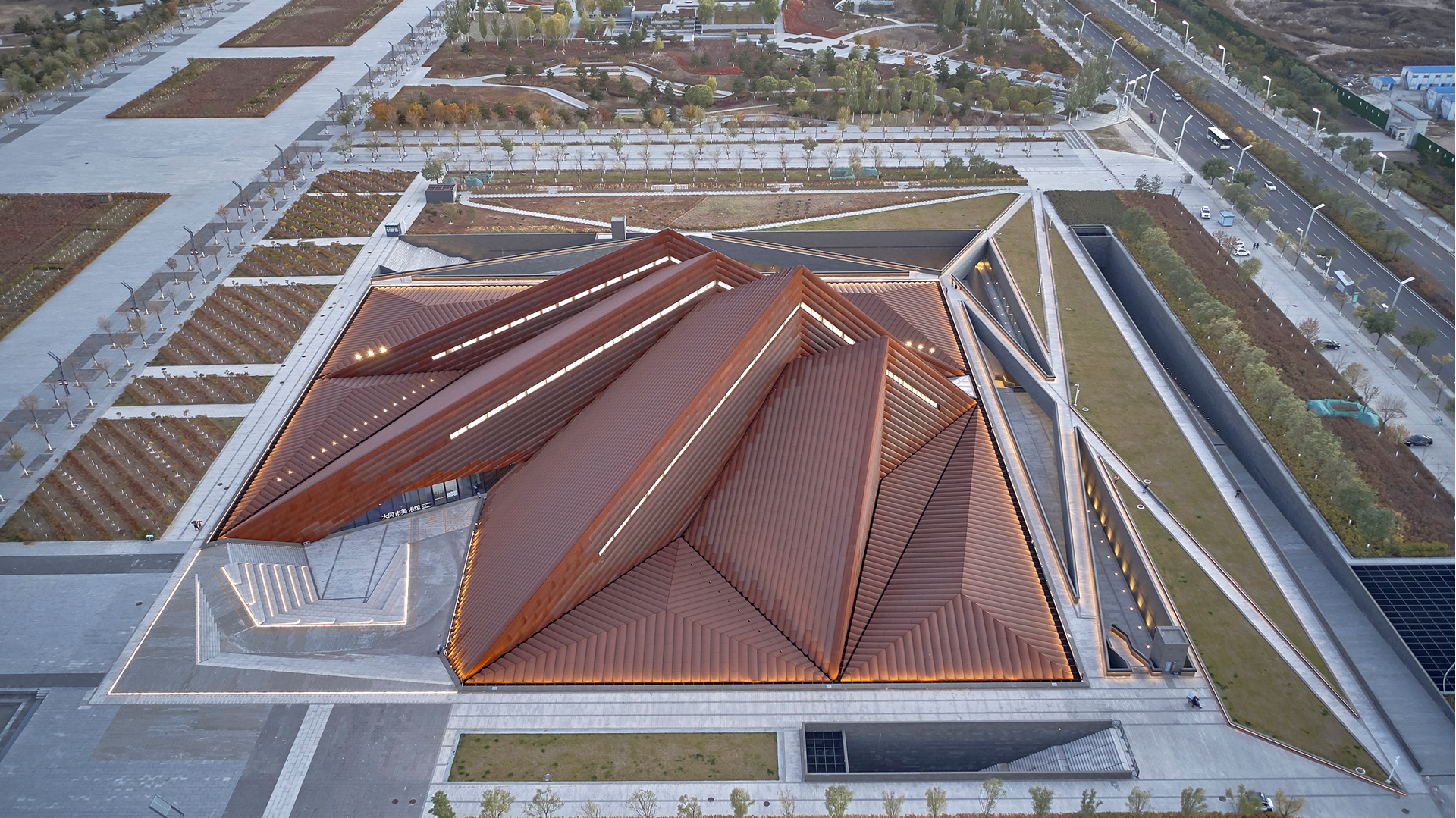
Datong Art Museum / Foster + Partners
Datong Art Museum – an important new cultural destination in China – designed by Fosters and Partners, has opened to the public with a special exhibition featuring oil paintings by local artists. One of four major buildings within Datong New City’s cultural plaza, it is set to become a new hub for creative industries in the region.
The building’s sculptural form has been conceived as a landscaped terrain with a series of interconnected pyramids emerging from below the earth – the gallery spaces are sunken below ground and surrounded by landscaped plazas. Complementing the museum’s cultural programme are a series of spaces dedicated to education and learning, including a children’s gallery, media library, archive and art storage facilities.


“The museum is conceived as a social hub for people – an ‘urban living room’ for Datong – that brings people, art and artists together in a space where they can interact. At the heart of the museum, the Grand Gallery exemplifies this spirit with a generously scaled, flexible exhibition space designed to accommodate specially commissioned large-scale artworks as well as performance art and other events.” Luke Fox, Head of Studio, Foster + Partners.
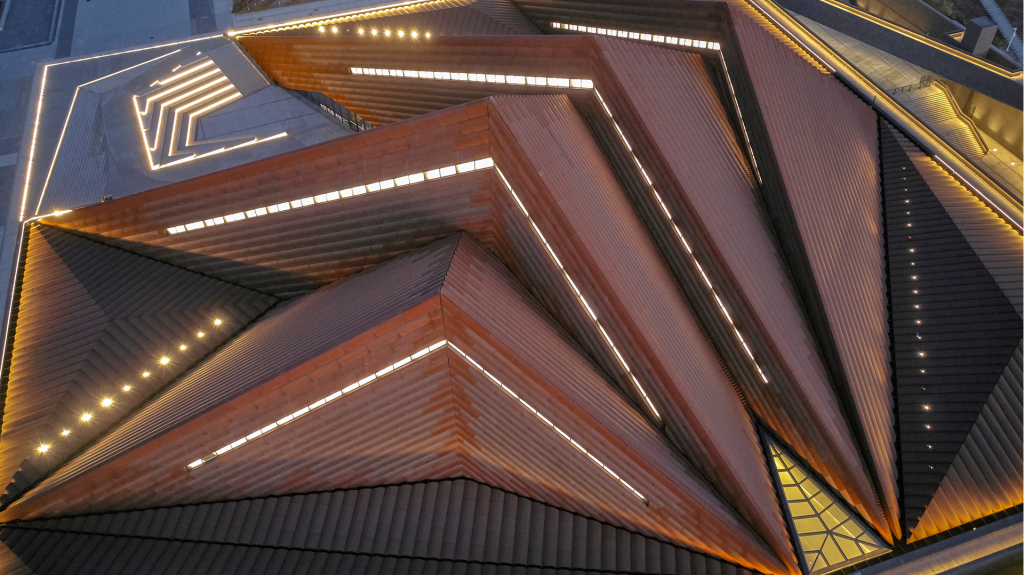
Visitors are guided towards the museum by strong diagonal paths in the landscaping. The entrance is via a winding sequence of ramps, which lead down into an open sunken plaza – this also provides an amphitheatre for outdoor performances. Entering the building, visitors arrive at a mezzanine level that reveals a spectacular overview of the Grand Gallery, the social heart of the museum, which measures 37 metres in height and spans almost eighty metres.
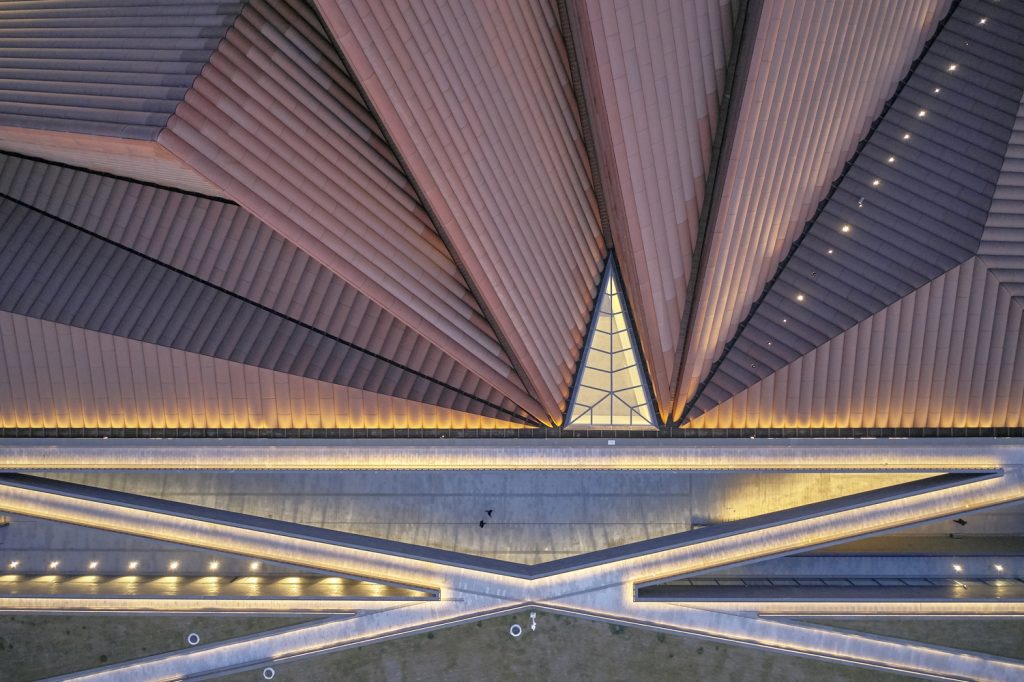
Further climate-controlled exhibition spaces are placed around the perimeter of the museum on a single level, allowing for ease of access. A key aspect of the building is the focus on education and learning with a dedicated children’s gallery, filled with sunlight from tall, south-facing windows. A smaller education centre and a media library complement the education programme.
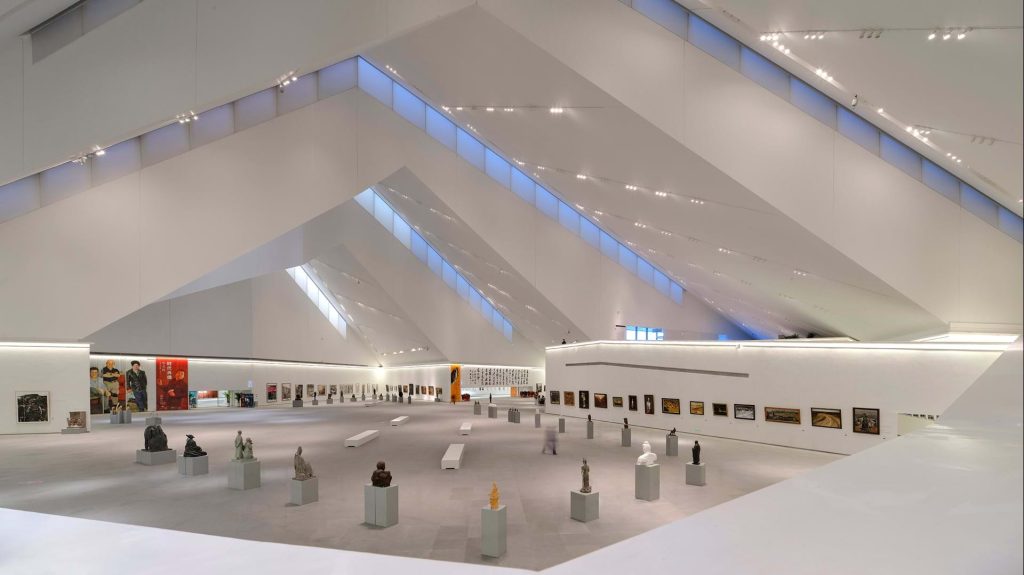
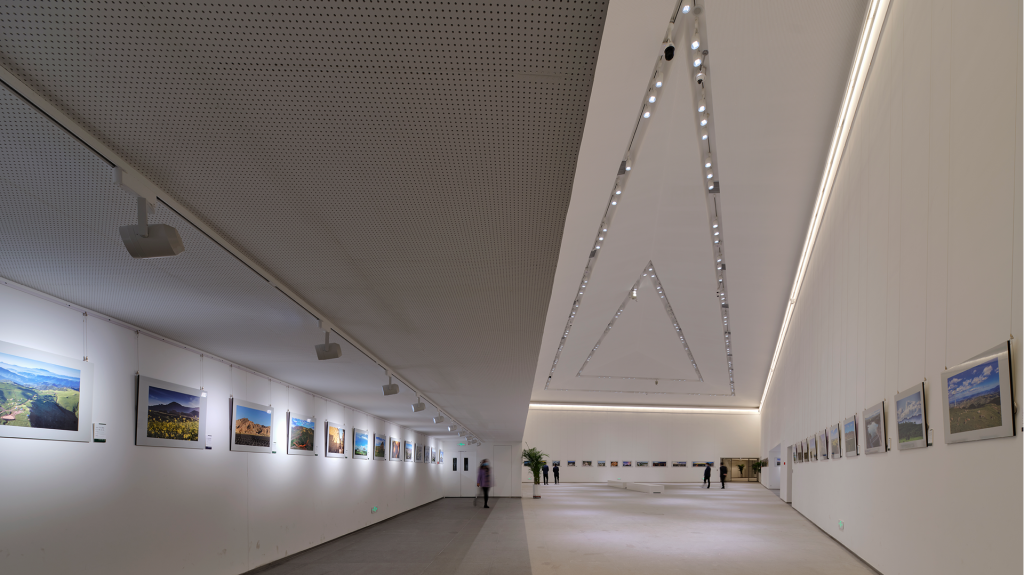
The four interconnected roof pyramids increase in height and fan outwards towards the four corners of the cultural plaza. The design of the roof is a direct response to the large structural span of the building and the desire to create a vast, flexible column-free volume below, while mediating the smaller gallery spaces towards the edges. The roof is clad in naturally oxidised curved steel plates that help drain water and give a rich, three- dimensional quality to the surface. The panels are proportioned to suit the large scale of the museum and their linear arrangement accentuates the pyramidal roof form.
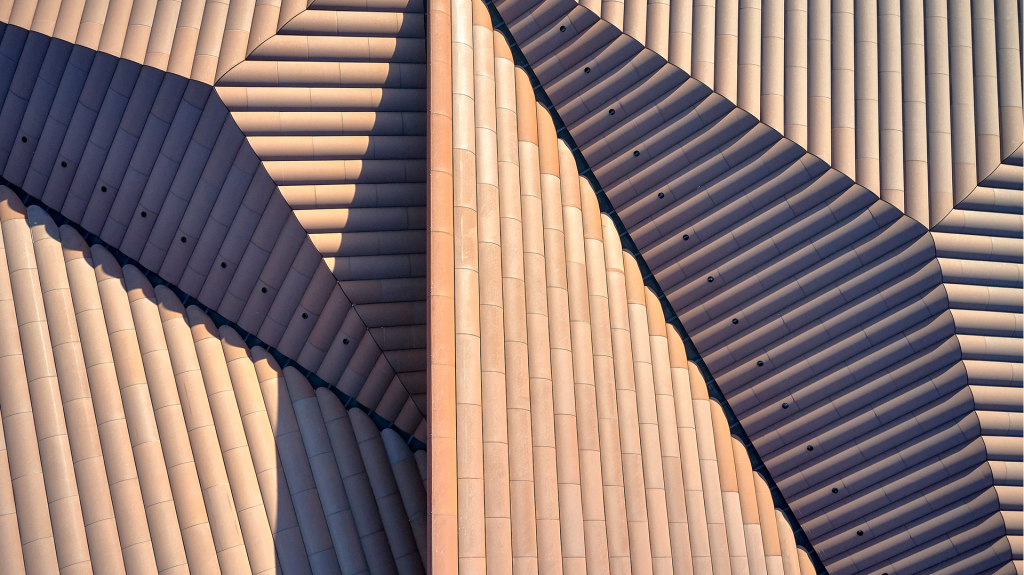
By sinking the building into the new plaza, the design relates in scale to the neighbouring cultural buildings, balancing the overall composition of the district masterplan while maximising the internal volume. A clerestory between each volume creates a naturally lit interior during the day, while creating a unique beacon for the new cultural quarter at night.

The building’s efficient passive design responds to Datong’s climate. Sinking the building into the ground along with a high-performance enclosure further reduces energy needs. The roof is mostly solid and is insulated to twice the building code requirements.
“Designed for the future, we hope the museum will become the centre of the city’s cultural life – a dynamic public destination,” added Luke Fox.


